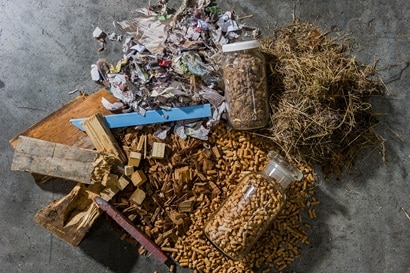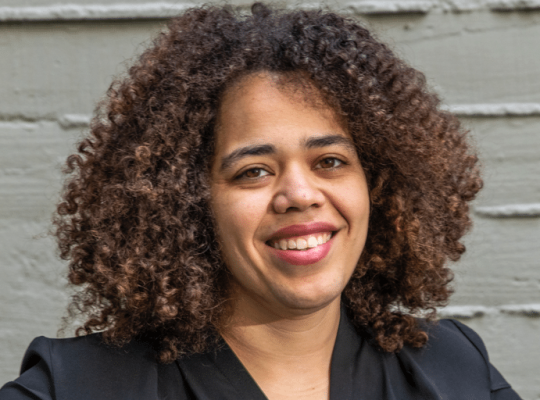This is the second part of a two-part blog post of our interview with Sarah Richardson, co-founder of MicroByre. If you haven’t read the first part, you can find it here.
Can you tells us a bit more about Microbyre’s founding team and your journey as an entrepreneur?
During Cyclotron Road, I brought in Jeff Anderson, and Maggie Brown as co-founders of the company. Real co-founders. It was super important for me not to do it alone. I believe that in the early stages there’s no point in being greedy or lying to yourself about what you can do alone. With the three of us, it allowed us to specialize. Jeff had deep cleantech law and organization building experience. I was learning how to be a CEO and making connections, and Maggie was in the lab making it work. We weren’t all in a post doc together. We were able to – just like a biological ecosystem – specialize and diversify.
It’s been an interesting ride. I don’t think I would go back and undo anything. It’s like a third post doc I guess; it’s just the stakes are very different.
I tend to not recommend it – it’s hard, it’s frequently lonely and most start-ups don’t succeed. You have to be delusionally optimistic. If you do do it, don’t do it alone. Nothing exists in a vacuum. It’s the community and ecosystem that allows me to do this. I would encourage people to join start-up companies that appear to be sanely run.
Could you tell us a bit more about where you see the company three years from now?
We want to be able to allow everyone else in bioengineering and in a lot of other fields to just realize all this promise. It’s the promise of really fighting climate change first and foremost. The global catastrophe is greenhouse gas emissions, and greenhouse gas emissions largely come from bacteria. People are providing bacteria more grist for the mill. So when you are putting fertilizer directly on the soil and it runs off to algae that’s a microorganism, blooming and causing toxins that make the waterways unusable or choking off everything. The end product is methane.
I want MicroByre to turn poop into gold. I want all biomass to become too valuable to just rot. I want to motivate the building of a biomass infrastructure by providing in places, ‘here is a waste feedstock, an organic stream that just goes to methane and saying that because this bacteria is so good with it and can produce a product that is so valuable, it’s actually going to be cheaper to use biomass in that sense here than to get E. coli to do it or to go from petroleum.’ In three years I want there to be enough products out there, enough success stories, that even more people come to us. We just have to keep building that momentum.
Right now our favorite climate story is a bacteria that I pulled out of an organic, artisanal backyard-fed bay area chicken. They have bacteria in their gut that is probably doing a probiotic service to them. It secretes a product that is a precursor to acrylic acid but it eats dairy waste. It’s a whole milk-waste to milk-waste story because acrylic acid is a major precursor to diapers. And so this is a good story. Dairy waste, through this bacteria, to this massive platform chemical can interrupt the petroleum cycle and green that and really reduce or completely eliminate the need to use petroleum to make this chemical that no one is going to stop using.

How has it been your experience using TeselaGen?
At the time I started advising TeselaGen, I didn’t have the resources to build GUI’s (graphical user interfaces) on any of my software. I think a good GUI is massively overlooked in software development. If the GUI is bad, it’s just impossible for you to use the software. Everything about the tool could be great, but if the GUI is bad, who wants to put up with it? The usability seems to be really at the forefront at TeselaGen.
MicroByre uses TeselaGen and it is absolutely the best tool. Being in TeselaGen’s ecosystem and benefiting from the other people in their ecosystem…just the questions people are asking of TeselaGen and the tool they are building to help everyone have been so beneficial to us. TeselaGen speeds up so many of our processes. The interface is easy to use. The crew is so responsive. We couldn’t find anything better.
I have an issue with a lot of LIMS systems, particularly because of MicroByre. We can’t buy off-the-shelf software. Part of what our interdisciplinary teams is building is wrappers for robots and putting together pipelines and using robots literally in ways no one else on the planet is using them. We write a lot of software on our own.
TeselaGen was a whole thing we didn’t have to write. When we get into genome engineering we use software we write ourselves, but we wouldn’t get there if we didn’t have something that was as robust and reliable and usable as TeselaGen.
What keeps you busy these days?
We are building ourselves up for the next round of deal making. Once we have that characterization running, the next step is genetic engineering. We observe the bacteria in so many conditions, and we’re looking at the right things to determine what are the things we need to work on or to surmount to be able to get it to actually listen to us. Here’s a piece of DNA that you’re actually going to respond to. Here’s how we start open communications with you. It’s like making first contact.
If you are really biased by E. Coli and yeast, you are going to be really limited to what conditions you think are eligible for bacteria. But if you have had a bunch of robots do an unbiased search and you see the peaks and troughs, you’re going to know when it’s time to put DNA in. You’re going to know how to do it. We’ve unlocked, colloquially, some bacteria that have never been unlocked before. We’re really good at even the ones that have been unlocked but haven’t been leveraged…here is the space in which they are going to shine and here are the minimum set of things we’d do with genetic engineering.
You can read the first part of this conversation here.
